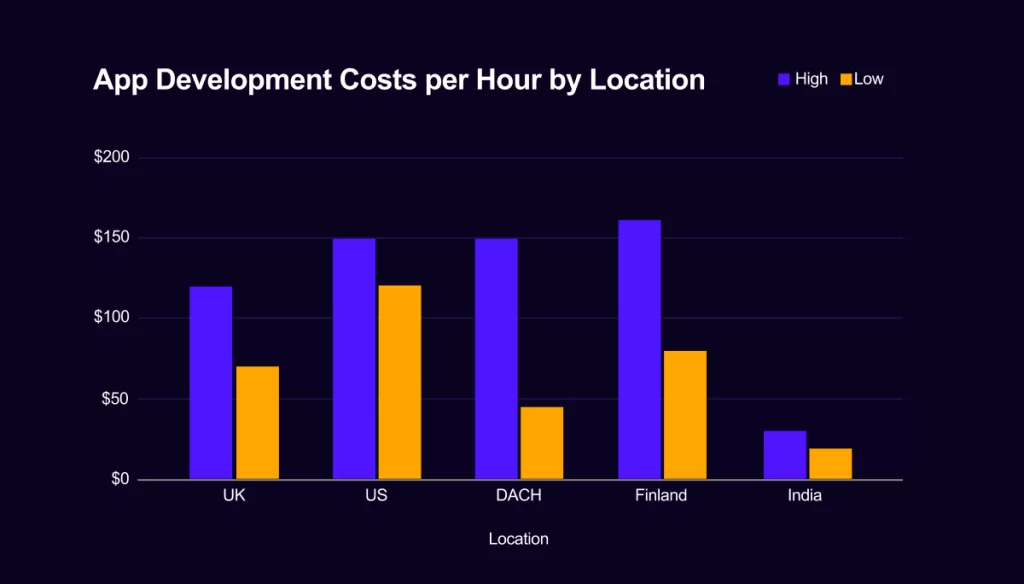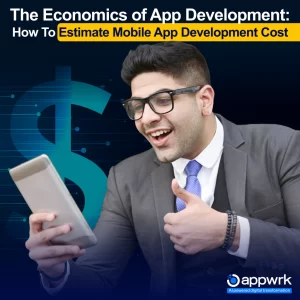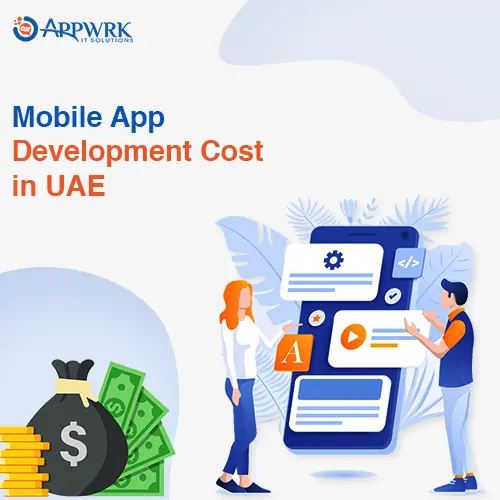The Economics of App Development: A Guide to Mobile App Development Cost Estimates
Let’s face it, building a mobile app for your business can be a significant investment, whether you are creating a new mobile app from scratch or revamping an existing one. Contrary to popular belief, mobile app development is not a one-size-fits-all process; every business has its own unique requirements for the app that affect the overall cost. A mobile app development cost estimate typically involves evaluating the scope of the project, including the features, platforms, and timelines, and can range anywhere from a few thousand to hundreds of thousands of dollars, depending on these factors. Not only do app development costs vary depending on the complexity of the features as well as design, but other factors such as platform choice, integration needs, and maintenance can also influence the final price tag.
App development costs can vary from $5000 to $500,000, according to the latest sources. While there are a plethora of mobile app development cost calculators, you still need to take into account a number of factors, like the app’s complexity, features, development platform, and the team you hire.
Whether you are in E-commerce, healthcare, banking, manufacturing, transportation, or any other business domain, having a proper understanding of the factors that affect mobile app development cost estimate will help you plan your budget sensibly for app development.
Let’s get into the nitty-gritty and find out how to calculate the cost of app development.
Table of contents
- Understanding App Development Costs: A Breakdown
- Factors Influencing Mobile App Development Cost Estimate
- Mobile App Development Cost Calculators
- Steps to Estimate Mobile App Development Cost
- Step 1: Define Your App’s Objective and Features
- Step 2: Choose the Platform
- Step 3: Evaluate App Design Complexity
- Step 4: Estimate Development Hours
- Step 5: Research Development Rates
- Step 6: Consider Additional Expenses
- Mobile App Development Cost Estimate Template
- Comparison of App Development Methods
- Conclusion
- What are the hidden factors affecting mobile app development costs?
- What is the mobile app development cost in Malaysia, India, the Philippines, and other developing countries?
- How do I create a mobile app development cost estimate template for my project?
- Can a mobile app development cost estimate template be used for both simple and complex apps?
- How to reduce mobile app development costs?
- How much does a mobile app cost to develop?
Understanding App Development Costs: A Breakdown
When it comes to creating an app, it’s crucial to properly understand the various factors that influence the cost. From initial planning as well as design to development, testing, and launch, each stage plays a crucial role in determining the final mobile app development cost estimate.

Understanding these factors not only helps in estimating the overall budget but also enables you to prioritize features and plan resources effectively.
Here’s a breakdown of the costs involved at each stage of app development, providing you with a clearer understanding of what goes into the pricing at every phase of the process:
Initial development costs
- Ideation or discovery phase: During the ideation phase, app developers collect all the information from the stakeholders to thoroughly understand the purpose of the app. To accurately calculate mobile app development cost estimate, developers evaluate the desired features, platform, and level of complexity of the app.
It helps developers turn information into detailed app requirements that meet user needs. This also includes mapping out features, specifying apps’ technical requirements, etc.
This phase, on average, costs between $1000 to $10,000.
- UI/UX Design: Once the app features are defined, the next phase involves creating wireframes, prototypes, and visual designs that showcase the app’s look and feel. The design prototype allows developers to gather feedback and suggestions from stakeholders and potential users to make necessary improvements.
The cost of this stage depends greatly on the design requirements, and it costs between $5000 and $5500.
- App Development Phase: This is the phase where most of the budget is utilized. The actual coding or app development takes place at this level. Software Developers work alongside designers and project managers, following the app design blueprint to create a minimum viable product. By adding features, integrating databases and APIs, and guaranteeing smooth performance across many platforms and devices, developers bring the design and functionality to life. Additionally, the app’s underlying infrastructure, including the control panel and server setup, is configured to ensure scalability for the anticipated user base.
The average cost of this phase is between $2,000 and $60,000.
- Testing Phase: It is crucial to test the app before launching. Testing the app ensures that all the components are working as expected and every part interacts smoothly with others. It also helps the developers identify bugs or any defects within the app.
This phase typically costs around $5000 or less.
- Launching the app: After your app has been thoroughly tested and refined, the next step is to submit it to the app stores for distribution. The two dominant app stores are Play Store by Google and App Store by Apple; both have their own guidelines and evaluation processes. Generally, the approval process takes around 5-7 days to complete.
Costs for this stage aren’t as high as those for the others; the Google Play Store charges a one-time price of $25, and the Apple App Store requires a 99-dollar annual subscription.

Ongoing maintenance and updates
Once the app is launched, maintenance becomes critical for running the application smoothly and efficiently. Not to mention, it also becomes a vital factor when calculating mobile app development cost estimate. On an annual basis, app maintenance is estimated to cost around 15–25% of the overall cost of creation. In some cases, especially in the first year after launch, maintenance can even amount to 50% of the original development cost.
This can include services like bug fixes, app and security updates, and ongoing customer support. They can be charged on an hourly basis, as part of the initial development cost, or as a fixed monthly fee.
Additional costs that aren’t always considered
Beyond the expected costs of development and maintenance, there are some additional costs that are often overlooked but are crucial when calculating mobile app development cost estimate. Keeping these costs in mind will help you save time and money.
- Third-party services fees: To enhance the app’s capabilities, integrating third-party services- like payment gateways, analytics tools, and social media integration is crucial. While these integrations streamline development, they may come with licensing fees or recurring charges that can add up over time.
- Marketing and user acquisition costs: After launching the app, you need to promote the app to attract users. Having a strong marketing strategy in place is essential to drive downloads and user engagement. This includes social media ads, app store optimization, influencer collaborations, and paid advertising. Experts recommend allocating a separate budget for marketing endeavors.
- Intellectual Property Protection: It goes without saying that safeguarding your app’s intellectual property rights and ensuring legal compliance is critical. This covers registering a trademark, protecting copyright, filing a patent, and seeking legal advice to construct the required agreements and contracts. By addressing legal matters upfront, you can avoid legal disputes in the future.
Factors Influencing Mobile App Development Cost Estimate
Calculating app development costs is a complex task that requires a lot of skills, expertise as well as attention to detail to come up with a reliable estimate. Even though there are numerous mobile app development cost calculators, there are still a number of key factors that you need to consider when calculating app development costs.
These factors can significantly impact both the initial and the future expenses. By understanding these factors, you’ll be better equipped to make a thoughtful and informed decision. Additionally, a clear understanding of these factors will help you plan for ongoing costs such as app maintenance, updates, and scaling as your business grows.
Listed below are the different app development approaches that are widely used.
App Development Approaches
Choosing the right development method for your mobile application is important for not only determining the right mobile app development cost estimate but also the time required to bring your idea to life. Different approaches offer varying levels of flexibility, control, and ease of use. Generally, there are three ways to create a mobile app: traditional mobile app development, no-code development, and low-code development.
Traditional Mobile App Development
In traditional app development, developers write custom code from scratch using programming languages like Kotlin, Java, or Swift. This approach offers maximum flexibility and more control over the app’s functionality, performance, and design. However, it requires a skilled development team, which can increase both the time and cost of development.
No-Code Development
As the name suggests, no code platforms allow users to build mobile applications without writing any code. These platforms use pre-built templates and drag-and-drop tools, making it easy for individuals to create apps without any technical background. These tools can definitely accelerate the development process and reduce costs, but they typically offer limited customization and sc ability. This approach is for simple apps or companies looking to launch an MVP(Minimum Viable Product) quickly.
Some popular no-code platforms for mobile app development are Quixy, Kissflow, Appy Pie, and Mendix.
Low-Code Development
Combining the best of “no-code development” with the best of traditional development, low-code platforms offer a hybrid approach, allowing developers to combine pre-built components with the flexibility to write custom code when necessary. Not only does low-code development help speed up development in contrast to traditional coding methods, but it also provides more flexibility than no-code platforms. Low-code development is better suited for companies that need a more tailored solution than what no-code platforms can offer while also aiming to save time and money compared to fully custom development.
Some popular low-code platforms for mobile app development are Airtable, Back4app, Zoho Creator, and Buildfire.
Also Read: 25 Best Mobile App Development Tools & Software for 2024
Mobile App Development Cost Calculators
As you can see, estimating the cost of mobile app development can be daunting, as it depends on various factors like functionality, platform choice, design complexity, and development time. Several online calculators can help you get a clearer picture of what your app might cost to develop. These calculators use predefined algorithms and a series of questions to provide you with a rough estimate based on your app’s requirements. Below are some popular app development cost calculators that can help you plan your budget and resources more effectively.
- Cleveroad calculator
Developed by Cleveroad, this calculator provides a solid estimate for app development projects. It asks a series of 10+ questions that cover aspects of your app, including whether it’s based on an existing app or will be built from scratch. The questions are designed to gauge essential details like platform choice (iOS or Android), app complexity, and specific features required. Based on your responses, the calculator will generate a final estimated cost for your app development project, helping you plan your budget accordingly.
- Inoxoft calculator
Inoxoft’s calculator is versatile, catering to both mobile and desktop app development. It allows you to break down the costs by the various stages of development, from planning and design to coding and testing. One of the key features of the Inoxoft calculator is its flexibility—if you have specific requirements or unique features, you can input them to get a more accurate estimate. This makes it an ideal tool for businesses with customized app needs that go beyond standard templates.
- Estimate My App
Estimate My App is another popular app cost calculator that simplifies the estimation process by gathering relevant details from you in a single interface. It asks for information about the app’s functionality, design complexity, platform preferences, and more. After you provide your estimates for each filter, the calculator uses this data to calculate an estimated development cost. This straightforward, user-friendly tool allows you to plan your project with greater accuracy, ensuring you have a clear idea of the budget required for your app’s development.
- Litslink
Litslink offers a comprehensive calculator that takes you through 27 questions across 7 steps to assess your app’s needs in detail. From basic functionality to more advanced features, the calculator considers various parameters, such as the complexity of the app, integrations, and design requirements. After reviewing all the inputs, you will be provided with a summary to approve, followed by a final estimate for your app development project. This calculator is particularly useful for those who need a detailed breakdown of their costs at each stage of development.
Steps to Estimate Mobile App Development Cost
The cost of mobile app development can vary greatly depending on several factors, such as the type of app, the complexity of the features, and the platforms supported.
Many business owners get confused and ask themselves, “How much does it cost to build an app? But the answer isn’t always straightforward. The cost can vary significantly based on the specific requirements and goals of the app, with the overall price being influenced by features, design, functionality, and the chosen development approach.
Step 1: Define Your App’s Objective and Features
Before you start calculating mobile app development cost estimate, it’s crucial to first define the app’s goals and core features. What problem is your app solving, or what value is it providing to users? What core features do you need? What type of app do you need? You need to make a detailed list of features and must-have functionalities that align with your applications’ needs. The complexity of features will directly influence the development time and cost, so make your pick wisely.
Step 2: Choose the Platform
Choosing the right platform will not only impact the overall cost but also influence the app’s reach, functionality, and user experience. Start by determining whether your app will be for iPhone, Android or cross-platform. You need to think about the preferences of your target audience or any platform-specific features that will enhance your app’s functionality. Both platforms have unique design guidelines and complexity that can affect the development budget.
Step 3: Evaluate App Design Complexity
There’s no denying that the user interface design of a mobile app can make or break the success of the app. You need to determine whether your app needs a simple and functional design or a highly interactive and visually appealing design. Applications with basic UI are less expensive and faster to develop, whereas custom user interfaces require more time and money. It’s important to carefully define the design elements and ensure that the final app design aligns with your goal and budget.
Step 4: Estimate Development Hours
When it comes to app development, time is money. Estimating the number of development hours upfront is crucial for setting a realistic budget. The development time will depend on the complexity of the app —whether in terms of functionality, design, or integrations. Breaking down the project into stages will help you allocate hours correctly.
This will not only help you better understand the cost but will also give you a clearer timeline for the entire project. With an accurate mobile app development cost estimate, you can avoid unexpected delays and costs, making sure that your app is both on budget and schedule.
Step 5: Research Development Rates

Understanding development rates is essential for accurately calculating your application’s overall cost. Additionally, rates can vary widely depending on the development teams’ geographic location, expertise, and the technical requirements of your app. For instance, Western Europe and North America-based developers can charge anywhere between $100-$200 per hour, while developers based in Eastern Europe and Asia typically charge lower rates of $20- $75 per hour. However, lower rates don’t always equate to lower quality- many overseas development teams do top-notch work for a fraction of the price. Make sure to check the development team’s portfolio, testimonials, and reviews before hiring, and select a team that aligns with your budget and expectations.
Step 6: Consider Additional Expenses
In addition to the core development costs, there are several other expenses that can impact your app’s total budget. These include costs for app design, user testing, project management, and ongoing maintenance. You may also need to include expenses for third-party integrations, cloud hosting, or data storage if your app requires them. Marketing and app store fees, such as the cost to list your app on platforms such as Google Play Store or the App Store, should also be considered. Don’t forget about future updates and bug fixes—while an app may be ready for launch, ongoing support is often needed to ensure it runs smoothly and stays relevant. By anticipating these additional expenses early on, you can avoid unexpected surprises and better manage your app development budget.
Also Read: How Much Money Can an App Earn in 2024?
Mobile App Development Cost Estimate Template
A mobile app development cost estimate template is an essential tool for businesses to understand the financial aspects of developing a mobile app. It provides a clear framework to outline and assess all costs associated with the app’s design, development, and maintenance. By using such a template, businesses can accurately estimate their budget, compare quotes from different developers, and ensure they have accounted for all relevant factors that impact the final cost. Below are five key components that should be considered when creating a mobile app development cost estimate template:
- Project Scope and Features: The template should outline the core features and functionalities of the app, including the platform (iOS, Android, or both), the type of app (native, hybrid, or web), and any customizations or integrations required. A detailed scope helps clarify the level of complexity, which is essential for cost estimation.
- Design and User Interface: It’s important to factor in the design costs, including UI/UX design and any custom graphic elements. The complexity of the user interface—whether it’s simple or intricate—directly affects the overall cost, so this section should estimate design time, resources, and any potential design revisions.
- Development Time and Resources: This section should break down the development process, including timelines for coding and development, as well as the resources required, such as the number of developers or specialists. Development time is often one of the largest cost factors, and estimating it upfront ensures that businesses can plan their budgets accordingly.
- Quality Assurance and Testing: An essential part of the app development process is testing and QA, which should be reflected in the cost estimate template. Include costs for both manual and automated testing, as well as the time required for bug fixes, usability testing, and ensuring the app’s compatibility across devices and platforms.
- Post-Launch Maintenance and Updates: Once the app is launched, ongoing maintenance is required to address bugs, security issues, and updates to stay compatible with new operating systems. The cost estimate template should include projected costs for these post-launch activities to avoid unexpected expenses after the app goes live.
By using a mobile app development cost estimate template, businesses can ensure they consider all necessary factors and have a clearer picture of the investment required for their mobile app development project.
Comparison of App Development Methods
When planning a mobile app, understanding how complexity impacts cost is crucial for budget planning. From simple apps with basic functionality to complex, feature-rich platforms, the development cost can vary significantly. In this comparison, we’ll break down the costs associated with different app complexities: simple apps, medium-level apps, and complex apps, helping you understand what cost to expect at each stage of development.
| App Complexity | Level of Complexity | Cost |
| Simple app | Basic UIMVP Functionality | $5000-$50,000 |
| Medium level app | Custom UIAdvanced features | $50,000-$100,000 |
| Complex app | Top-notch UIMultiple advanced features | $100,000-$300,000 |
App Development Platforms and Their Impact on the Overall Cost
It goes without saying that choosing the right mobile application development platform is a critical decision that significantly influences the cost of app development. Needless to say, it’s essential to align your platform decision with your audience’s preferences and device usage. Below are the key platforms to consider:
Android App Development Cost
Android is by far the most widely used mobile OS, powering a vast range of devices across various manufacturers (e.g., Samsung, Google, Xiaomi). Android app development generally involves Java or Kotlin programming languages, and apps are distributed via the Google Play Store. With Android’s open-source nature, developers can create more customizable apps but also face increased device fragmentation.
Typically, the average price of Android mobile app development is between $50,000 and $300,000.
iOS App Development Cost
iOS is a leading operating system designed specifically for Apple devices, including iPhone and iPad. IOS apps are mostly developed using languages like Swift or Objective-C. Apple enforces strict design guidelines and app store policies, requiring all apps to adhere to these standards.
iOS app development costs, on average, between $55,000 to $300,000.
Cross-Platform App Development Cost
With cross-platform development, developers can use a single codebase to build applications that run on both iOS and Android. Popular frameworks like React Native, Flutter, and Xamarin help streamline this process. For businesses looking to reach people across several platforms without wasting time or money, cross-platform development is frequently a cost-effective option.
Cross-platform (hybrid apps) mobile app development costs around $40,000 to $150,000.
Also Read: 25 Best Mobile App Development Tools & Software for 2024
In-House Development vs. Outsourcing: Which Option Impacts the App Development Cost Estimate the Most?
One of the most important decisions you will have to make when developing a mobile app is whether to build the app in-house or outsource the work to an external development firm. Each approach has its advantages and disadvantages, and the correct choice depends on your project’s scope, timeline, and, most of all, budget.
Let’s break down the two options.
In-House Development
In-house development involves building a mobile app using or hiring a team of developers, designers, and project managers. This approach gives you direct control over the project, ensuring better alignment with the company’s vision and goals.
Factors Influencing In-house App Development Cost
Team Salaries and Benefits: In-house teams require full-time salaries, benefits, and often investments in infrastructure and development tools. Hiring skilled developers with years of experience can greatly influence the costs.
Project Management and Overheads: Managing an internal team requires dedicated project managers, along with the overhead costs of managing an in-house team, including communication, coordination, and administrative support, which also add to the overall expense.
Best For:
- If you have a highly specialized project that requires detailed knowledge of your business processes.
- If your company plans to invest in long-term app maintenance and updates.
- If you need complete control over the development timeline and quality assurance.
Outsourcing
Outsourcing app development involves contracting an external development team or agency to handle the design, coding, and deployment of your app. This option can be highly cost-effective, especially when working with teams in regions where labor costs are lower.
Factors Influencing Outsourced App Development Cost
- Fixed or Variable Pricing Models: Outsourcing firms can offer pricing based on fixed rates or hourly prices, which can be more flexible compared to maintaining an in-house team. Depending on the complexity of your app, the overall cost can be negotiated upfront with a fixed rate or adjusted based on the project’s progress or milestones achieved.
- Access to Specialized Talent: By outsourcing, you can hire seasoned developers with expertise in specific technologies, frameworks, or app types without having to hire full-time employees. This can improve the work quality and result in more innovative solutions.
- Time Zone Challenge: With outsourced development teams, there can be time zone issues, which can cause communication gaps, hinder productivity, and lead to frustration. It is crucial to maintain clear communication and avoid misunderstandings that can lead to additional costs and delays.
Best For:
- If you need to reduce development costs while still accessing a skilled team.
- If the project has a short deadline or requires rapid scaling.
- If you need specialized skills that are not available in-house.
Also Read: How Much Does It Cost To Hire App Developers?
Conclusion
Estimating the cost of mobile development can seem daunting, but with the proper understanding of the factors involved, you can make well-informed choices that align with your budget and business goals. From ideation to ongoing maintenance and updates, every phase of the development process affects the overall budget, and recognizing these aspects early on can help with efficient planning.
With in-depth planning with a skilled development team like APPWRK, you’ll be on your way to creating a high-quality mobile application that’ll truly connect with your target users.

Want to bring your own mobile app idea to life without spending a fortune? At APPWRK IT Solutions, App Development & AI-Driven Digital Transformation, our team of highly skilled and seasoned mobile app developers will help you build high-quality mobile apps at a price that’ll fit right into your budget. We are committed to delivering intuitive and highly engaging mobile apps that truly define your vision and help your business grow in no time.
Contact Us today for your exceptional mobile app development project to grow your business exponentially and engage users beyond your reach!
FAQs
What are the hidden factors affecting mobile app development costs?
Some of the hidden factors that affect mobile app development’s overall cost are
- Quality assurance
- Infrastructure costs
- IT support costs
- App publishing costs
- App Security
What is the mobile app development cost in Malaysia, India, the Philippines, and other developing countries?
In developing countries like Malaysia, India, and the Philippines, mobile app development costs are generally more affordable compared to developed nations. This is largely due to lower labor costs and a growing tech industry in these regions. For example, in these countries, you can find competitive pricing for both simple and complex app development projects, which may range from a few thousand dollars for basic apps to tens of thousands for custom solutions. By working with developers in these countries, businesses can access quality development services at a fraction of the cost, while still receiving high-quality work tailored to their needs.
How do I create a mobile app development cost estimate template for my project?
To create a mobile app development cost estimate template, start by outlining the key components of your app, including its platform (iOS, Android, or both), the complexity of features, and any required integrations. You should also factor in design, testing, and post-launch maintenance. Once these elements are defined, you can estimate the time and resources required for each and calculate an overall cost range. Using a template helps ensure that you capture all necessary details and create a more accurate estimate, making it easier to manage your project’s budget.
Can a mobile app development cost estimate template be used for both simple and complex apps?
Yes, a mobile app development cost estimate template can be used for both simple and complex apps. The template allows you to break down the different aspects of your app’s requirements—whether it’s a basic app with minimal features or a custom-built app with advanced functionalities. By filling in the relevant details in the template, you can get a more accurate cost estimate tailored to the complexity of your project, helping you plan your budget effectively.
How to reduce mobile app development costs?
There are a number of ways to reduce app development and make it affordable. Below are some of the methods to reduce the cost of app development.
- Prioritize Features at the earliest.
- Involve the Quality Assurance Team Early On
- Plan for the Future goals and objectives
- Decide whether you want to opt for In-house team or Outsource
- Consider Cross-Platform Development to expand the reach to a wider audience
How much does a mobile app cost to develop?
It depends on various factors, like the complexity of the app and the platform(iOS, Android) you choose. For example, if you want to develop a simple app with a basic user interface, it will cost anywhere between $5000-$50,000, whereas a custom app with dedicated features starts from $100,000. A mobile app development cost estimate typically involves evaluating the specific requirements of your app, such as its functionality, design, and integration needs, which can significantly influence the final price.
About The Author


 Free Quote
Free Quote
















































